
Home - Search - Browse - Alphabetic Index: 0- 1- 2- 3- 4- 5- 6- 7- 8- 9
A- B- C- D- E- F- G- H- I- J- K- L- M- N- O- P- Q- R- S- T- U- V- W- X- Y- Z
Lunar Bases
The Lunar Base never seemed to be a high priority to space visionaries, who were mainly interested in getting on to Mars. It was usually seen as a proving ground for Mars vehicle technology, or as a place to mine propellant for use in a larger space infrastructure.
Subtopics
 |
Apollo Lunar Landing American manned lunar expedition. Begun in 1962; first landing on the moon 1969; sixth and final lunar landing 1972. The project that succeeded in putting a man on the moon. |
 |
Horizon Lunar Outpost American manned lunar base. Study 1959. In 1959 the US Army completed a plan for a manned military outpost on the moon. |
 |
KLE Complex Lunar Expedition Russian manned lunar base. Chelomei's design for a lunar base, studied 1964 to 1974 as a UR-700-launched predecessor or alternative to Barmin's DLB. |
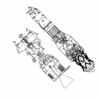 |
L3 Russian manned lunar expedition. Development begun in 1964. All hardware was test flown, but program cancelled in 1974 due to repeated failures of the project's N1 launch vehicle. |
 |
Project Selena American manned lunar base. Study 1964. Bono's enormous ROMBUS booster could fly all the way to the lunar surface and back if low Earth orbit rendezvous and propellant transfer were used. He therefore proposed using the booster to establish a lunar base. |
 |
DLB Lunar Base Russian manned lunar base. Substantial development activity from 1962 to cancellation in 1974. The N1 draft project of 1962 spoke of 'establishment of a lunar base and regular traffic between the earth and the moon'. |
 |
LESA Lunar Base American manned lunar base. Cancelled 1968. LESA (Lunar Exploration System for Apollo) represented the ultimate lunar base concept studied by NASA prior to the cancellation of further Saturn V production in June 1968. |
 |
L3M Russian manned lunar base. Study 1970-1972. Follow-on to the L3, a two N1-launch manned lunar expedition designed and developed in the Soviet Union between 1969 and 1974. |
 |
LEK Lunar Expeditionary Complex Russian manned lunar base. In 1974 Mishin was fired as head of the Korolev design bureau, the N1 was cancelled, together with the L3 and Zvezda DLB lunar base projects, However Glushko, Mishin's replacement, still considered the establishment of a moon base to be a primary goal for his country. |
 |
JSC Moon Base 1984 American manned lunar base. Study 1984. In 1984 a Johnson Space Center team lad by Barney Roberts took NASA's first look at a return to the moon after the shuttle was in service. |
 |
AES Lunar Base American manned lunar base. Cancelled 1968. AES (Apollo Extension Systems) was planned as the first American lunar base. It would involve minimal modification of Apollo hardware. The Apollo CSM would be modified for long duration lunar orbit storage. |
 |
ALSS Lunar Base American manned lunar base. Cancelled 1968. The ALSS (Apollo Logistics Support System) Lunar Base would require a new development, the LM Truck, to allow delivery of up to 4100 kg in payload to the lunar surface. |
 |
Outpost on the Moon American manned lunar base. Study 1987. Former astronaut Sally Ride was asked to head a task force to formulate a new NASA strategic plan in August 1986. |
 |
Energia Lunar Expedition Russian manned lunar base. Study 1988. In 1988, with development of the Buran space shuttle completed, Glushko ordered new studies on a lunar based that could be established using the Energia booster. |
 |
Lunar Exploration Program 1968 American manned lunar base. Cancelled 1968. In January 1968, BellComm, NASA's Apollo project management advisor, proposed a four-phase program for exploration of the lunar surface using Apollo and Apollo-derived hardware. |
| Lunar Evolution Base 1989 American manned lunar base. Study 1989. In August 1989 NASA's Office of Exploration completed a two-year, NASA-wide plan for future manned space exploration. |
 |
First Lunar Outpost American manned lunar base. Study 1992. The First Lunar Outpost was a very comprehensive moon base study carried out by NASA's Office of Exploration in 1992. |
 |
Lunox American manned lunar base. Study 1993. The NASA/JSC LUNOX proposal of 1993 tried to reduce the cost of maintaining a First Lunar Outpost by producing liquid oxygen propellant for the return to Earth from lunar soil. |
 |
LANTR Moon Base American manned lunar base. Study 1997. Liquid oxygen mined from the moon combined with a LOX-Augmented Nuclear Thermal Rocket earth-to-moon shuttle to achieve dramatic reductions in launch requirements for a lunar base. |
 |
Chinese Lunar Base Chinese manned lunar base. Study 2025. Beginning in 2000, Chinese scientists began discussing preliminary work on a Chinese manned lunar base. |
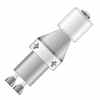 |
CEV Andrews American manned spacecraft. Study 2005. The Andrews Crew Exploration Vehicle (CEV) design adopted NASA's preferred Apollo CM re-entry vehicle shape, but combined it with a mission module crew cabin to minimize the CEV's mass. |
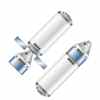 |
CEV Spacehab American manned spacecraft. Study 2005. The final Spacehab CEV concept was a three-module spacecraft using a slightly enlarged Apollo command module for return of the crew to earth. |
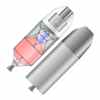 |
CEV SAIC American manned spacecraft. Study 2012. SAIC's notional CEV was a Soyuz-shaped aeroshell, enclosing a common pressurized module, and accommodating a crew of four. |
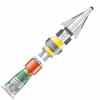 |
CEV Lockheed American manned spacecraft. Study 2012. The Crew Exploration Vehicle first proposed by Lockheed was a lifting body with a total mass of 18 metric tons and a crew of four. |
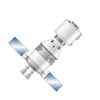 |
CEV Boeing American manned spacecraft. Study 2012. Boeing's CEV consisted of a four-crew Apollo-type capsule, a service module, and a pressurized mission module. |
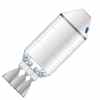 |
CEV Orbital American manned spacecraft. Study 2012. Orbital's nominal CEV was an Apollo-derived capsule. The CEV's service module would take the capsule from low earth orbit, to lunar orbit, and back to earth. |
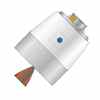 |
CEV Raytheon American manned spacecraft. Study 2012. Raytheon's CEV was a low L/D capsule, designed for three crew, sized so that an existing EELV Heavy could send it towards L1. |
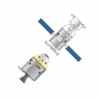 |
CEV Northrop American manned spacecraft. Study 2012. Northrop Grumman kept its CEV final proposal very secret, citing competitive concerns. |
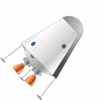 |
CEV Schafer American manned spacecraft. Study 2012. Schafer proposed a lightweight 11 metric ton integral CEV, staged from L1. |
 |
CEV Draper MIT American manned spacecraft. Study 2012. The Draper-MIT CEV proposal was an 8-metric ton integral ballistic capsule. |
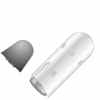 |
CXV American manned spacecraft. Study 2012. Crew Transfer Vehicle proposed by `t/Space and Burt Rutan's Scaled Composites for NASA's Crew Exploration Vehicle requirement. |
 |
Lunex US Air Force manned lunar base. Studied 1958-1961. The final lunar expedition plan of 1961 was for a 21-airman underground Air Force base on the moon by 1968 at a total cost of $ 7.5 billion. |
Back to top of page
Home - Search - Browse - Alphabetic Index: 0- 1- 2- 3- 4- 5- 6- 7- 8- 9
A- B- C- D- E- F- G- H- I- J- K- L- M- N- O- P- Q- R- S- T- U- V- W- X- Y- Z
© 1997-2019 Mark Wade - Contact
© / Conditions for Use
